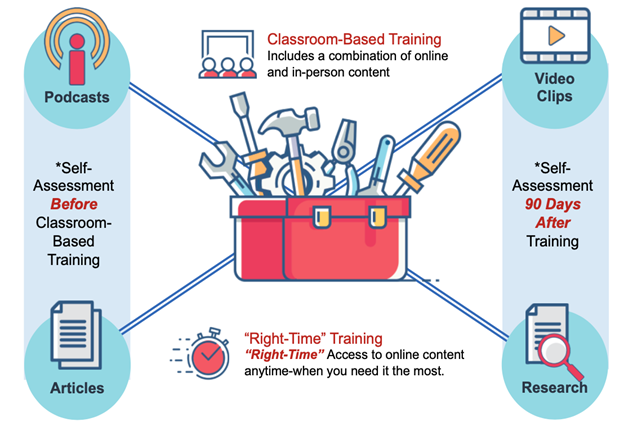Step 1: Attend an Information Meeting
At this meeting you will be provided an overview of what foster care is, the values of our agency, issues for you to consider before starting this journey, what our training looks like, and the steps involved to become certified.
Step 2: Documentation and Background Checks
Once you submit the pre-application, we will complete background checks. Once the background checks are complete, you will be invited to a pre-training interview. Once the interview is complete, and both parties believe Adams County Foster Care is a good fit, you will be invited to participate in an upcoming training.
Step 3: Training
Adams County Foster Care Program trains prospective foster parents with the National Training and Development Curriculum.
The following information is provided by National Training and Development Curriculum. Additional information can be found by visiting their website.
What is the NTDC Curriculum?
The National Training and Development Curriculum (NTDC) is a new curriculum that is based on research and input from experts, families who have experience with fostering or adopting children, and former foster and adoptive youth. It provides potential foster or adoptive parents with the information and tools needed to parent a child who has experienced trauma, separation, or loss. It is a state-of-the-art classroom and online program that helps to prepare prospective foster and adoptive parents to be successful parents. In addition, the NTDC gives parents access to information and resources needed to continue building skills once they have a child in their home.
Explore the Curriculum:

Self-assessment:
The self-assessment is a critical part of the NTDC experience. The self-assessment is an online tool that parents complete twice: once before they start classroom-based training and again after they complete the classroom-based training. The questions on the self-assessment correlate to the themes taught in the classroom and to the characteristics that have been found important for parents who foster or adopt. The tool is designed to help parents who are thinking of fostering or adopting to discover more about their parenting style, including their own characteristics and abilities and how and where they could benefit from building their knowledge, attitude and skills related to parenting children who have experienced trauma, grief, and loss.
Immediately after completing the tool, parents receive feedback on areas of strength and areas where they may want to build upon. They will have the opportunity to select five topical areas that they would like to receive additional information. This information is emailed to the parents and contains strategies and information that can help to build their strengths. The tool is a great way to determine how one parent’s strengths and areas of growth compliment their parenting partner’s or support systems. Parents are encouraged to refer back to their self-assessment scores throughout the classroom-based training to further enhance their learning. The second self-assessment report compares their initial scores with the current scores, providing a quick glance of the parents’ progression so that they can better understand their growth over the course of the classroom-based training and areas that they might benefit from continued learning opportunities.
The self-assessment reports are only sent to the parent. The facilitator receives an aggregate report that contains the scores for everybody in their cohort. The aggregate report is designed to help the facilitator tailor the classroom sessions and materials to meet the specific needs of the participants in that training cohort.
Classroom-based learning themes:
- Classroom-based themes for families who are fostering or adopting through the child welfare system
- Introduction and Welcome
- Child Development
- Attachment
- Separation Grief and Loss
- Trauma Related Behaviors
- Trauma Informed Parenting
- Effective Communication
- Reunification- the Primary Permanency Planning Goal
- Foster Care- A means to Support Families
- Preparing for and Managing Intrusive Questions
- Maintaining Children’s Connections with Siblings, Extended Family Members and their Community
- Cultural Humility
- Parenting in Racially and Culturally Diverse Families
- Mental Health Considerations
- Impact of Substance Use
- Creating a Stable, Nurturing, Safe Home Environment
- Accessing Services and Support
Right-Time Training:
The third component of NTDC is right-time training. This component provides on–going learning and skill development for participants by providing additional themes that are not covered in the classroom-based training. These trainings can help to prepare families for experiences they may face when a child is placed in their home, or they can support families after placement when they are dealing with the day-to-day challenges. Right-time training is designed to allow parents to guide their own continued learning and to obtain parenting information at the time it is needed. Resources such as videos and written materials will be easily available to parents through an app or Web-based platform, enabling parents to continue building their skills over time and access age-specific information as their children transition through different developmental stages.
Each right-time theme is approximately 1 hour and contains the following elements:
- Video
- Key points of the video
- Discussion guide
- Questions and answers
- My story podcast
- Resources on the topic
These trainings can be viewed by the parents on their own, used as discussion pieces in support groups, or as an engagement tool for caseworkers during a home visit. There are 15 themes covered in right-time training.
- Managing Placement Transitions
- Life Story: Birth Story and Adoption Story
- Sensory Integration
- Sexual Development and Identity
- Sexual Trauma
- Responding to Children in Crisis
- Preparing for Adulthood
- Education
- Common Feelings Associated with Being Adopted
- Preparing for and Managing Visitation
- Family Dynamics
- Building Children’s Resilience
- Accessing Services and Support
- Building Parental Resilience
Step 4: Home Study
After all documents are received, including reference letters, we will complete a SAFE home study.
A home study is the process we use to approve applicants for foster parent certification. It consists of assessments of the applicant, the applicant’s family, and the applicant’s home environment to determine whether the home would be safe and appropriate for children in foster care.
Step 5: Certification and Placement
Upon completion of the home study, the home study writer will bring it to our certification review team for approval or denial. Once your home study has been approved, your certification worker will come to your home, complete the inspection, sign paperwork, and then you will be able to share your home and your heart with a child in need.
Supports
Throughout the application, training, and certification process Adams County offers ongoing support and training. Foster parents are an integral member of our team to provide safety and protection for children. Please join us in serving children in need.




